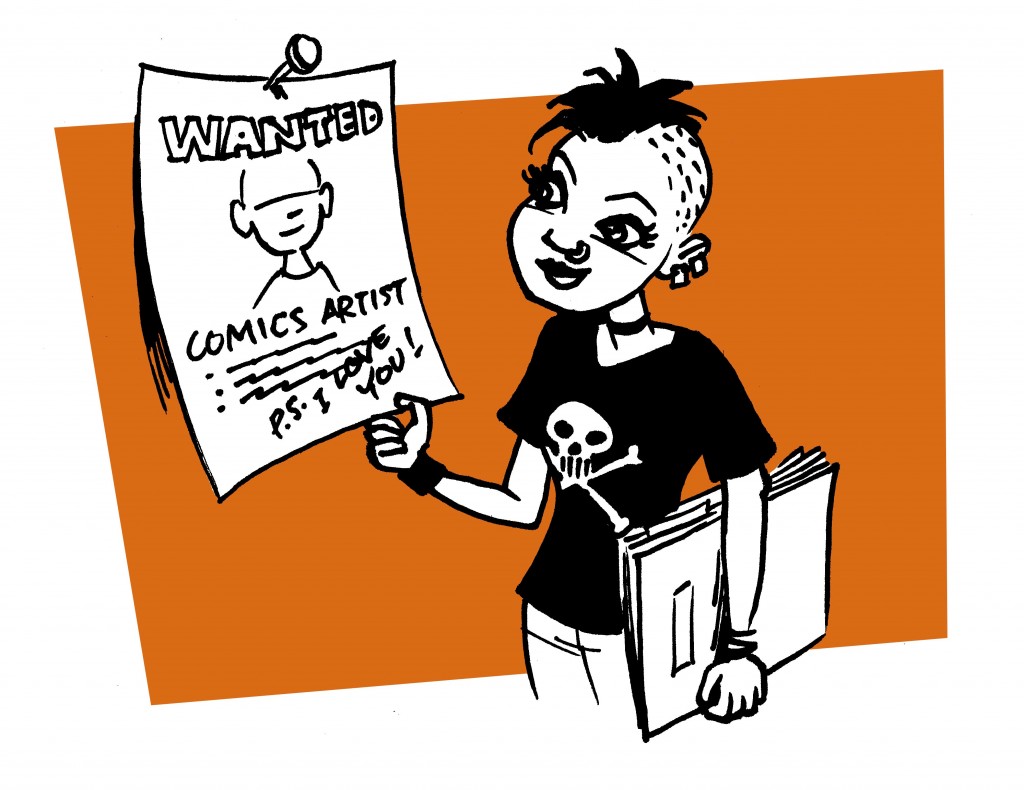 This blog is focused on comics creation as a whole, rather than seeing writer and artist as two separate things. But what do you do if you have a great story written but don’t feel you have the drawing skills to pull it off?
This blog is focused on comics creation as a whole, rather than seeing writer and artist as two separate things. But what do you do if you have a great story written but don’t feel you have the drawing skills to pull it off?
It’s a big commitment for an artist to draw a comic book that someone else wrote.
Getting an artist on board on your big project is not going to be easy, unless you have the cash to pay for their time. And even then, you’re competing with other commitments and paid work.
Being both a writer and an artist, I can see things from both sides. And I know there are more people out there who can write than there are people who can draw. Time is another important factor. You can write five 22-page issues of something in the same time it takes an artist to draw just one. So how do you lure someone into spending weeks and months hunched over the drawing table working on your book?
Here’s what I think will help:
- A script. I would never agree to draw something from a pitch or an idea. If a writer can’t show me any writing, all the alarm bells go off. And if I am expected to commit to a longer series, I need not only a script for the first ten pages, I need to know where it’s all going. I need to know the writer can write and has a plan.
- A track record. Again, showing that you can produce something helps convince others to get on board. If you have other finished projects on your resume, you may be able to hook an artist with just a detailed outline with a beginning, middle and end. A few pages of script is still necessary, to show that you can write.
- A smaller commitment. It’s much easier to agree to draw ten pages in black and white, than a six issue series or a fully painted graphic novel. As a writer, this also gives you a chance to see how the relationship works out. Just because an artist can show excellent work doesn’t mean they can produce it consistently, keep a schedule or be easy to work with. Doing a shorter story is mutually beneficial.
- Money. Sure, we are all for sale. The more money you can put up front, the harder it is for an artist to say no. But like mentioned above, artists can be flaky, so doing a shorter thing together is a good idea before you pay an artist a huge sum for a book they may never deliver.
- Ownership. If you offer to give the artist a creator credit, it helps sell the message that you are both in the same boat. If you do a pitch together (see this page for how to create a compelling pitch) to get a publisher, having split ownership of the property makes the artist invest more time and effort.
- Trust. The cornerstone to any working relationship is reliability and trust. To get an artist to commit time and energy to your project, you need to trust them to do their thing without you looking over their shoulder. You need to trust their decisions and listen to their input – or at least pretend. But you also need to deliver on your promises and not be late with a script, feedback or payment.
Happy hunting!
PS: Even if you never plan to draw anything, it might be a good idea to at least have an idea of the process. So sign up for my 100% free 7-day crash course here.